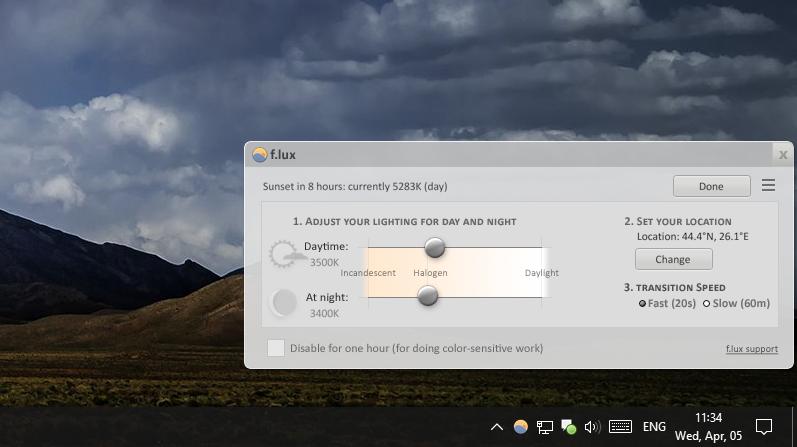
"The effects of color described here extend to other mammals, such as humans." "An especially pertinent question, however, is whether the effects of color described here extend to other mammals, such as humans."
#F.lux screen code#
You can audit the code yourself if you want, it's only 58 lines of JS across 2 files:Ĭonst C=chrome, d=document.createElement('div'), It adds a translucent tinted div overlay on every page, with mix-blend-mode:multiply to make the text come out a little sharper. Where Dark Reader is full-featured, mine is minimal. I haven't spent any time tweaking the threshold values, but maybe some tweaking would make it even better.ĭark Reader inspired me to write a similar one for myself. # works, I guess brightness-based the color inversion doesn't happen.Ĭ._color_scheme = 'dark'Ĭ. = 'lightness-cielab'Ĭ.all = FalseĬ.images = 0.0Ĭ.images = 'smart'Ĭ.page = 'smart'Ĭ.background = 128Ĭ.text = 128 # This requests the dark version of the website if it is available. The relevant part of my config file looks like this: This can make website colorschemes quite different, but most of the websites I visit regularly are still still readable, and often still reasonably nice-looking, despite having inverted colors. backgrounds that are too bright are inverted, and text that is too dark is inverted).

(That said, qutebrowser is great.)Īnyway, my vague understanding of what is does is that it inverts all colors on the wrong side of a user-configurable brightness threshold (e.g. The documentation also mentions Chromium, so perhaps equivalent settings are available there. My impression is that the implementation is mainly in Qt, or Qt Webengine, so the same functionality may be available in other browsers with the same engine. I use the built-in darkmode settings in qutebrowser, which work surprisingly well for most websites, but certainly not perfect.


 0 kommentar(er)
0 kommentar(er)
